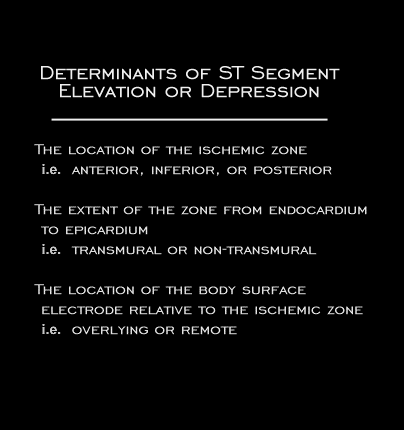
To summarize: Whether acute myocardial ischemia will cause depression or elevation of the ST segment on the body surface ECG depends on the location, extent (transmural or non-transmural) and size of the ischemic region; the position of the recording electrodes on the body surface and the relationship between the location of the recording electrodes and the location of the ischemic zone.
